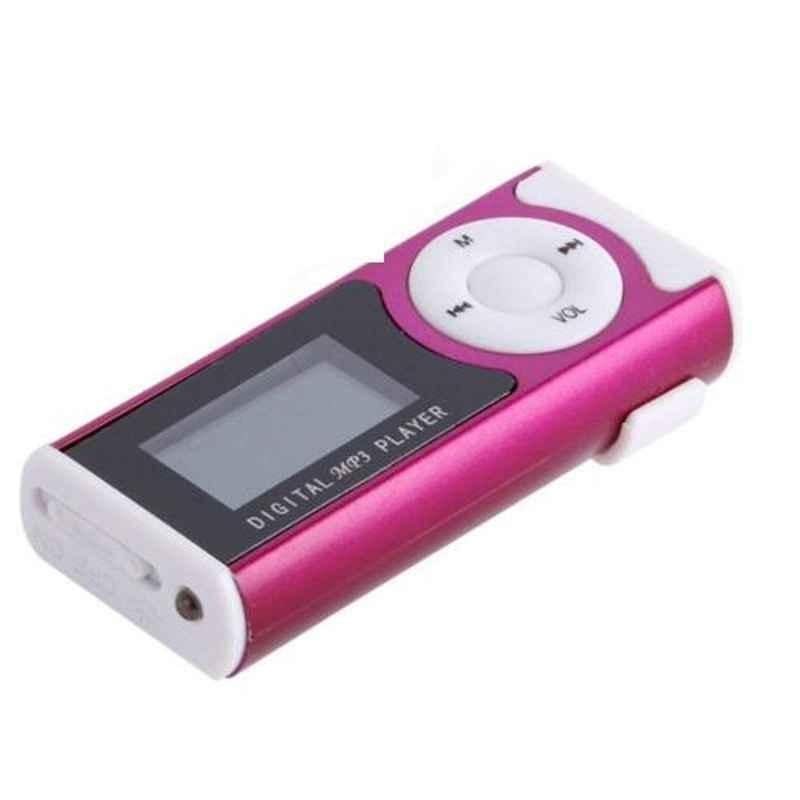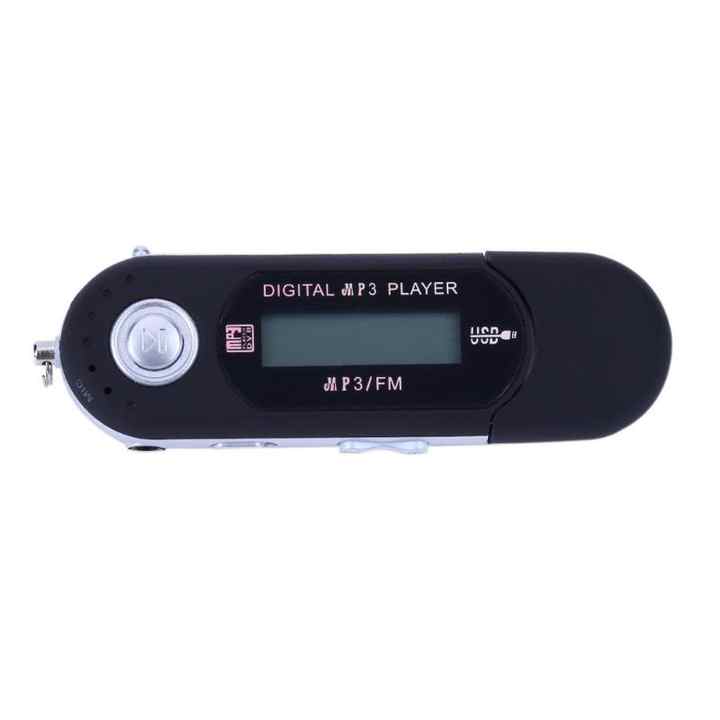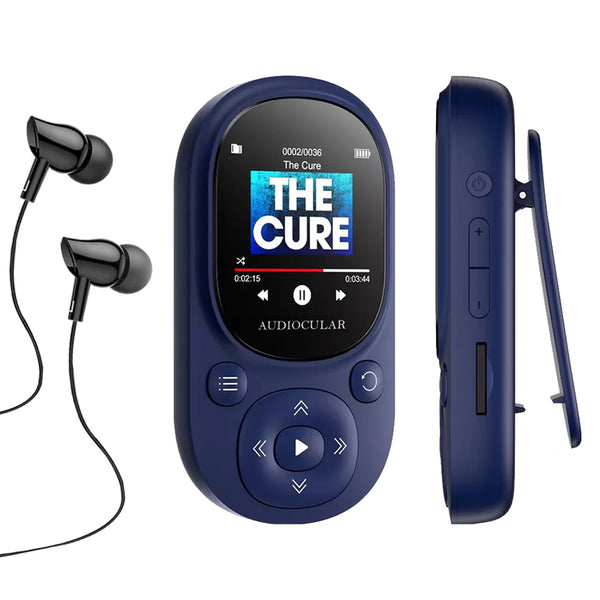MP3 Players vs Smartphones: The Sound Quality Debate
What is an MP3 player? In the age of smartphones, MP3 players remain a staple for audiophiles. Why do they persist? The answer lies in sound quality. Smartphones do many tasks, but dedicated MP3 players focus on one: playing music. This focus means better sound.
Quality MP3 players use superior components known as digital-to-analog converters or DACs. Smartphones often have simpler DACs to save space and costs. As a result, MP3 players deliver cleaner, more nuanced audio.
Moreover, smartphones typically offer file formats like AAC and MP3. These are ‘lossy’, reducing file size by cutting out sound details. On the other hand, MP3 players support high-resolution or ‘lossless’ formats. These include FLAC and WAV, preserving every bit of the original sound.
Audiophiles favor MP3 players for their audio fidelity. High-quality players present music as it was intended. They reveal subtleties in tracks that smartphones may miss.
MP3 players also avoid the pitfalls of phone use. No calls, messages, or app notifications to interrupt your music experience. They offer a focused, pure listening session—just you and your music, with no distractions.
Finally, high-end MP3 players often boast extended battery life. They aren’t drained by calls, internet use, or other apps. This means longer listening times, ideal for travel or longer outings without a charger.
The debate continues, but MP3 players hold their ground. For those seeking the highest audio quality and undisturbed listening, MP3 players beat smartphones hands down.

The Resurgence of High-Resolution Audio Players
The world has seen a noteworthy resurgence of high-resolution audio players, known as hi-res players. These devices cater to the discerning ear, offering quality that’s leaps beyond what’s standard in most smartphones. Technological advances have spurred this revival, drawing in audiophiles who crave superior sound fidelity.
Hi-res players are unique, supporting a vast array of lossless formats like FLAC, ALAC, and WAV. These formats keep music just as the artist intended, without loss from compression. This capability allows listeners to enjoy the fullness and detail in their music collection.
Additionally, the design of these players often prioritizes sound enhancement. They come equipped with advanced DACs and amplifiers, outperforming the typical smartphone setup. Such players deliver a listening experience with greater precision and depth.
Battery life is another major draw for hi-res players, as they can run longer than smartphones. Without the burden of multiple apps, calls, or internet browsing, these devices keep the music playing for hours on end.
Portability and design also contribute to the appeal of hi-res audio players. Sleek, compact builds make them a convenient and stylish choice for music enthusiasts on the go. Many models boast an aesthetic charm, with user-friendly interfaces that enhance the listening experience.
As the market for high-fidelity music grows, so does the variety of hi-res players available. Brands like FiiO and Astell & Kern are leading the charge, offering models that range from budget-friendly to luxury options. This diversity ensures there’s a hi-res player for every type of audiophile.
In essence, the resurgence of high-resolution audio players is a testament to the ongoing demand for pure, uninterrupted, and high-quality music. It’s a niche that continues to thrive, even in an era dominated by streaming services and smartphones.
The Role of Digital-to-Analog Converters (DACs) in Audio Quality
The quality of music we hear from MP3 players deeply depends on DACs. Digital-to-Analog Converters, or DACs, are the bridge between digital music files and the analog sound we hear. In simple terms, they translate digital code into sound waves. Their role is crucial in determining audio quality.
MP3 players with top-notch DACs provide a clear, rich sound that can reveal subtle details in music. Unlike smartphones, high-end players often feature advanced DACs, designed specifically for audio playback. This results in a more faithful reproduction of the original recording.
Smartphone makers must balance several functions within one device. This can lead to compromises in audio components. MP3 player manufacturers, on the other hand, can focus solely on sound quality. They invest in premium DACs that can process high-resolution files without losing detail.
For audiophiles, the differences are noticeable. A well-crafted DAC allows an MP3 player to deliver depth and clarity. It can produce the warmth of a live performance or the intricacies of a studio mix. With better DACs, listeners enjoy a more immersive experience, as if the music surrounds them.
In conclusion, DACs are essential for top-quality audio. They make MP3 players a favorite choice for pure sound enthusiasts. Invest in a device with a good DAC, and you’ll notice the superior sound right away.

Why Audiophiles Choose Dedicated Hi-Res Audio Players
Audiophiles are known for their dedication to pure sound quality, which is why many choose hi-res audio players over smartphones. These dedicated devices cater to a specific need: delivering the highest fidelity sound. Here are a few reasons why hi-res audio players are the preferred choice for true music lovers.
- Superior Sound Components: Unlike smartphones, hi-res players have advanced DACs and amplifiers. This ensures music playback that is rich with detail and depth. Premium components translate to superior sound quality, making every listening session a true experience.
- Lossless Audio Format Support: Hi-res players handle lossless audio formats like FLAC, ALAC, and WAV. These formats preserve the full quality of the original recording. This means no detail gets lost in translation from the studio to your ears.
- Dedicated Audio Processing: Hi-res players focus solely on audio. This focus allows for optimized sound processing. As a result, these devices can bring out nuances in music that smartphones usually miss.
- Better Battery Life: With no other apps or functions to power, hi-res players boast longer battery life. This allows for extended music sessions without the need for constant recharging, especially useful for travelers or long commutes.
- Physical and On-Screen Controls: Hi-res players often come with intuitive controls, both on-screen and physical buttons. This enhances the user’s ability to navigate their music library and tailor their listening experience.
- Design and Build Quality: These players are often crafted with a keen eye for design. Aesthetic appeal, coupled with solid build quality, makes them not just a tool for listening but also a statement piece for the discerning audiophile.
In conclusion, when it comes to pure music enjoyment without compromise, dedicated hi-res audio players offer clear advantages. They provide audiophiles with a level of quality and engagement that smartphones cannot match. For music enthusiasts who consider sound quality paramount, investing in a dedicated hi-res player is a decision that pays dividends in acoustic excellence.
The Impact of File Formats on Music Listening
When choosing an MP3 player, file formats are crucial. Let’s explore why. Different file formats have a direct impact on the quality of music you enjoy. MP3 and AAC, commonly used in smartphones, are ‘lossy’ formats, meaning they compress audio and lose some sound details to make file sizes smaller.
High-resolution ‘lossless’ formats, like FLAC, WAV, and ALAC, keep every sound detail intact. As you might guess, they need more storage, but they offer the purest sound. Audiophiles prefer these formats because they deliver music as the artists intended, without any loss.
File formats also define the compatibility with your music collection. If you download high-quality tracks, you want an MP3 player that supports them. Hi-res players shine here, handling a wide range of formats beyond standard MP3 quality.
So, file formats influence two things: how good your music sounds and whether you can play your favorite songs. The right MP3 player reads your chosen formats, giving you both the tracks you love and the rich sound quality you seek.
To sum up, the file formats your MP3 player supports determine your musical enjoyment. They impact sound quality and your ability to play various audio files. Choose wisely for the best listening experience.

How Portability and Design Influence MP3 Player Selection
When it comes to choosing an MP3 player, portability and design play crucial roles. A sleek, lightweight device is more likely to become a constant companion, allowing music enthusiasts to enjoy their tunes anywhere. Let?s delve into how these factors impact the selection process.
Size Matters
A compact and slim MP3 player is a top choice for active individuals. The smaller the device, the easier it is to carry in pockets or bags. Portability ensures that your favorite tracks are just a reach away, whether you’re commuting, exercising, or just on the go.
Design Aesthetic
MP3 players are not just functional; they’re also fashion statements. The look and feel of a player can reflect personal style. Bright colors and unique shapes can appeal to those who want to stand out, while classic designs suit a more understated taste.
Build Quality
The build quality of an MP3 player affects both its durability and usability. Metal constructions can withstand drops better, while plastic ones are lighter. Additionally, well-placed buttons and intuitive touchscreens make for a more enjoyable user experience.
Comfort and Controls
Ergonomic form factors and tactile buttons can greatly enhance the user’s comfort. These elements are especially important when operating the player without looking, such as during workouts or when tucked in a pocket.
Overall, when selecting an MP3 player, one must consider how the device’s portability and design align with their lifestyle and preferences. A player that feels right in your hand and fits seamlessly into your life will likely become a cherished gadget for everyday music enjoyment.
The Longevity and Battery Life of Dedicated Music Players
When considering an MP3 player, battery life is key. It influences how long you can enjoy music without a power source. Here’s why dedicated music players often outshine smartphones in this department:
- Extended Playtime: MP3 players are designed to do one thing well: play music. This single-focus allows for optimized battery usage, leading to longer play sessions without charging.
- Low Power Consumption: High-quality MP3 players have efficient power management systems. They consume less power, especially when compared to a smartphone with multiple active applications.
- Replaceable Batteries: Some MP3 players come with batteries that you can replace. This feature extends the overall life of the device. Even when the original battery wears out, you can simply swap in a new one.
- Durable Construction: Many MP3 players are built to last. They have hardy components that withstand the wear and tear of daily use, ensuring they stay functional for years.
In short, if long battery life and longevity in a music player are important to you, a dedicated MP3 player may be the ideal choice. You can take it on long trips or enjoy hours of uninterrupted music without worrying about charging.
Understanding the Market: Top MP3 Players of the Year
Navigating the modern market for MP3 players can feel complex. Various brands offer unique features to stand out in a saturated market. Below are key insights into top MP3 players this year, highlighting why they remain crucial for many music lovers.
- Feature-Rich Devices: Current MP3 players offer more than audio playback. They come with features like Bluetooth connectivity, touchscreen interfaces, and streaming abilities. This makes them versatile devices for all types of users.
- High-Resolution Support: The best MP3 players now support high-resolution audio formats. These include FLAC, ALAC, and WAV files, ensuring a top-tier listening experience. Music sounds more detailed, full, and rich on these devices.
- Premium Build Quality: Many MP3 players have a solid construction, with metal casings and high-quality screens. They’re built to last and to provide a touch of luxury to your listening sessions.
- Extended Battery Life: Some of the top MP3 players boast impressive battery lives. They can play music for hours on end, beating most smartphones quite easily.
- Specialized Audio Hardware: The inclusion of advanced DACs and amplifiers in MP3 players significantly ups the sound quality. It leads to a listening experience that smartphones typically can’t match.
- Affordable Options: While some MP3 players target the high-end market, there are also affordable models. They offer a balance between quality and value, ideal for budget-conscious audiophiles.
In summary, this year’s MP3 players are diverse. They suit various needs, from casual listeners to audio perfectionists. They highlight the demand for specialized devices in an age where smartphones seem to do it all.
When choosing your MP3 player, storage is key. Here’s what to consider:
Internal Memory
The built-in storage of an MP3 player determines how many songs it holds. More memory means more music. Players often range from 8GB to 256GB. If you prefer having a large library on your device, choose a player with ample internal memory.
Micro SD Expansion
Expansion slots for micro SD cards add flexibility. They let you increase storage as needed. You can swap cards for different music collections too. Micro SD support allows for potentially unlimited music, just by having multiple cards at hand.
In sum, storage options greatly affect how you use your MP3 player. Both internal memory and micro SD expansion have pros and cons. Think about how much music you have and how you like to access it when making your choice.
The Future of Music Listening: Streaming Services vs Physical Media
The music industry is at a crossroads with streaming services and physical media. Here’s how they compare.
Accessibility and Convenience
Streaming services offer instant access to millions of songs. They’re convenient, with music just a click away. However, this accessibility can depend on internet availability.
Sound Quality and Music Ownership
Physical media like MP3 players provide superior sound quality. Unlike streaming, owning music files means you can play them anytime, without an internet connection.
Collection and Curation
With MP3 players, collectors curate and own their music. Streaming services offer playlists, but the choice and ownership lies with the company, not the user.
Cost-Efficiency
Streaming can require ongoing subscriptions, potentially costly over time. MP3 players have a one-time cost for the device and the music, offering long-term savings.
Longevity of Media
Physical media, like an MP3 collection, can last for years without quality loss. Streaming services may lose rights to certain songs, changing your music library.
In conclusion, while streaming services boast accessibility, MP3 players win on sound quality, ownership, and potential cost savings. The choice between streaming and physical media depends on one’s priorities for convenience versus quality and ownership.


